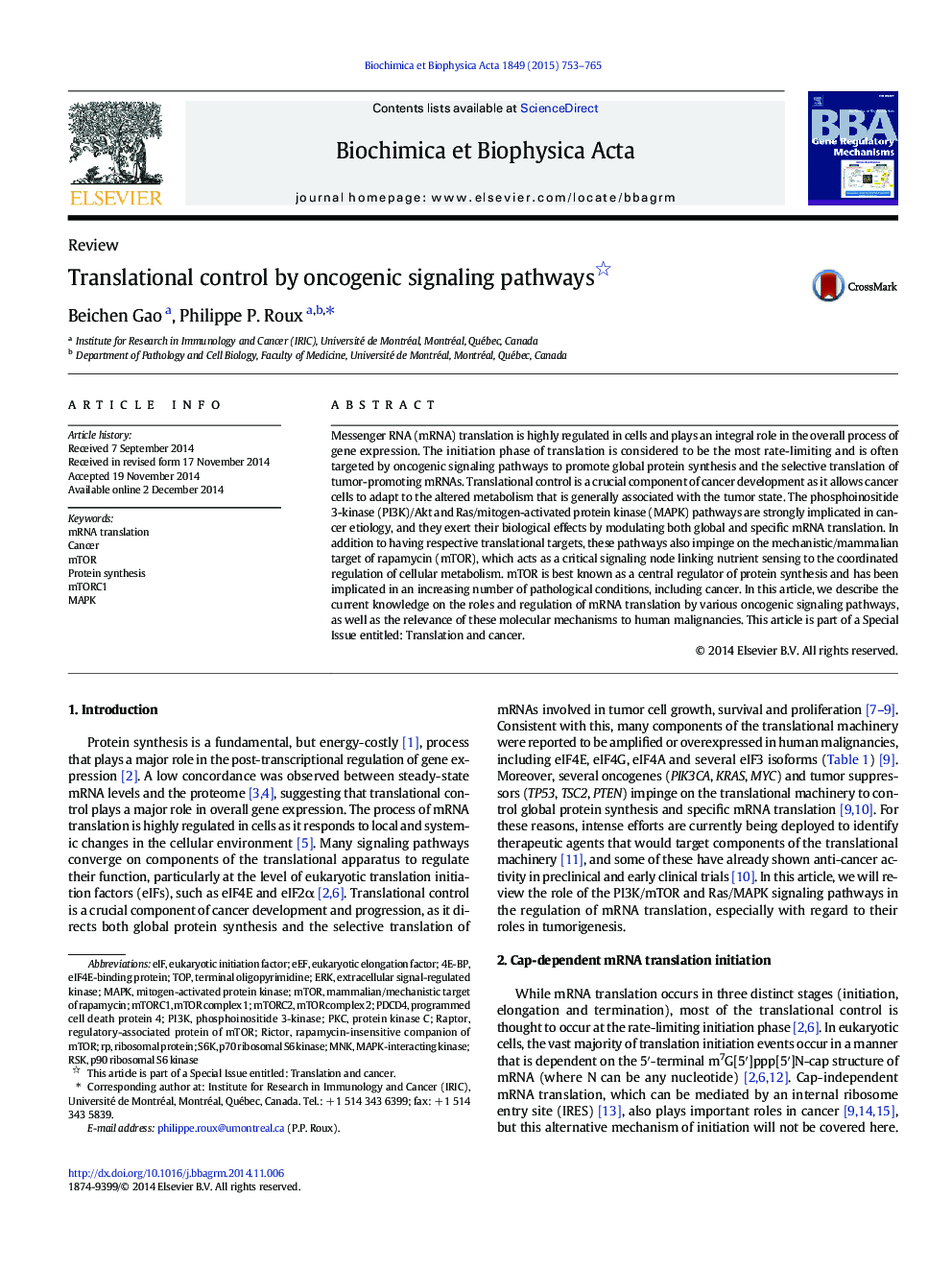| Article ID | Journal | Published Year | Pages | File Type |
|---|---|---|---|---|
| 1946395 | Biochimica et Biophysica Acta (BBA) - Gene Regulatory Mechanisms | 2015 | 13 Pages |
•Translational control is a crucial component of cancer development.•Translation initiation is often regulated by oncogenes and tumor suppressors.•The PI3K/Akt and Ras/MAPK pathways regulate mRNA translation.•The expression of several eIFs is increased in cancer.•mTOR is a central regulator of protein synthesis implicated in most cancer types.
Messenger RNA (mRNA) translation is highly regulated in cells and plays an integral role in the overall process of gene expression. The initiation phase of translation is considered to be the most rate-limiting and is often targeted by oncogenic signaling pathways to promote global protein synthesis and the selective translation of tumor-promoting mRNAs. Translational control is a crucial component of cancer development as it allows cancer cells to adapt to the altered metabolism that is generally associated with the tumor state. The phosphoinositide 3-kinase (PI3K)/Akt and Ras/mitogen-activated protein kinase (MAPK) pathways are strongly implicated in cancer etiology, and they exert their biological effects by modulating both global and specific mRNA translation. In addition to having respective translational targets, these pathways also impinge on the mechanistic/mammalian target of rapamycin (mTOR), which acts as a critical signaling node linking nutrient sensing to the coordinated regulation of cellular metabolism. mTOR is best known as a central regulator of protein synthesis and has been implicated in an increasing number of pathological conditions, including cancer. In this article, we describe the current knowledge on the roles and regulation of mRNA translation by various oncogenic signaling pathways, as well as the relevance of these molecular mechanisms to human malignancies. This article is part of a Special Issue entitled: Translation and cancer.
Graphical abstractFigure optionsDownload full-size imageDownload high-quality image (87 K)Download as PowerPoint slide
